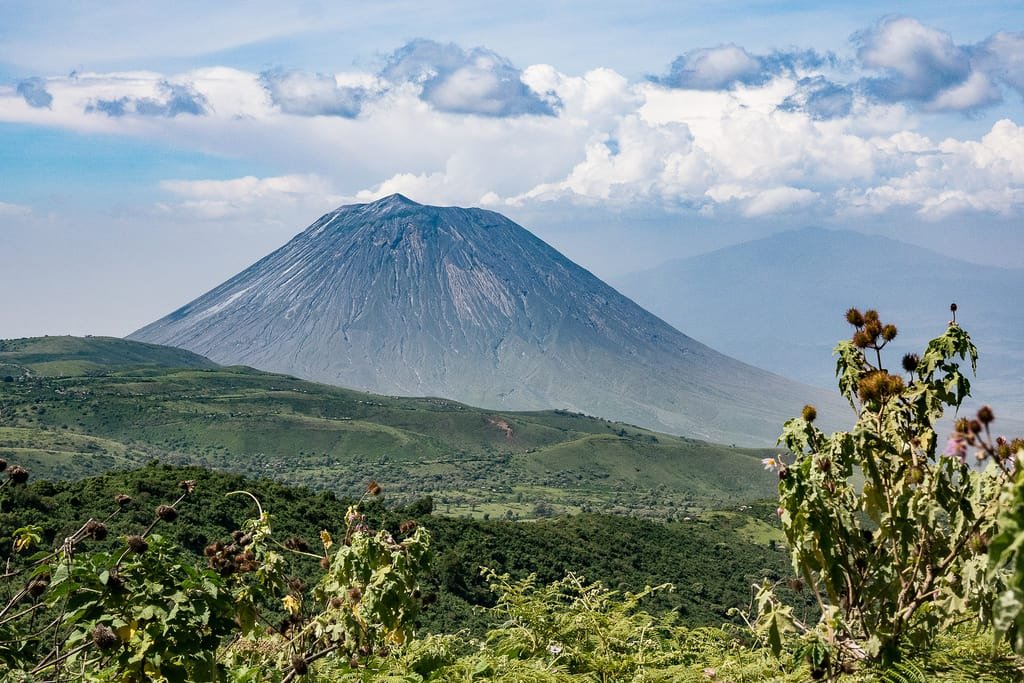- 1
- 2
- 11
- 1
- 1
- 2
- 2
- 1
- 22
- 20
- 21
- 7
Mt. Oldonyo Lengai
The climbs of Oldonyo Lengai, meaning “Mountain of God” in the Maasai language, offer a truly unique and challenging mountaineering experience unlike the more popular Kilimanjaro or Mount Meru. Here’s a description of what you can expect:
The Mountain:
Active Carbonatite Volcano: Oldonyo Lengai is the world’s only known active volcano that erupts natrocarbonatite lava. This lava is significantly cooler (around 500-600°C) than typical silicate-based lava and has a distinct black color when molten, often appearing like flowing mud or oil during the day. It turns white rapidly when it reacts with moisture in the air.
Shape and Terrain:The mountain has a steep, conical shape with loose volcanic ash, scree, and crumbly rocks dominating the terrain. This makes for a physically demanding ascent and a particularly tricky descent.
Altitude: The summit elevation varies slightly depending on recent volcanic activity but is generally around 2,880 – 2,962 meters (9,442 – 9,718 feet) above sea level. The starting point for most climbs is significantly lower, resulting in a substantial vertical gain.
Location: Situated south of Lake Natron in the Great Rift Valley, it’s a remote and dramatic landscape, often hot and dry.
The Climb:
Timing: Most ascents are done overnight, starting around midnight or the very early morning hours (1:00 – 2:00 AM) to reach the summit by sunrise. This is primarily to avoid the intense heat of the day. The descent typically takes place during the morning.
Duration: The ascent usually takes between 4 to 6 hours, depending on fitness levels and the specific route. The descent can take a similar amount of time, making the total climb duration around 8 to 12 hours.
Difficulty: The climb is considered challenging due to the steep incline, loose and slippery terrain, and the significant elevation gain. It requires a good level of fitness and strong determination. While not a technical climb requiring ropes or specialized mountaineering skills, the conditions demand careful footing and mental fortitude. Trekking poles are highly recommended.
The Experience:
Night Ascent: Hiking under the moonlight (or with headlamps) on the black volcanic slopes is a unique and often described as a mystical experience.
Sunrise at the Crater: Reaching the summit at sunrise offers breathtaking and unparalleled panoramic views of Lake Natron, the Great Rift Valley, and sometimes even distant Mount Kilimanjaro and Mount Meru on a clear day.
Active Crater: From the summit, you can often peer into the active crater, witnessing small eruptions, lava cones, and the unique black lava flows. The activity level can vary.
Descent: The descent is often considered more challenging than the ascent due to the steep and slippery scree, requiring careful and sometimes slow progress.
Guiding: Climbing Oldonyo Lengai requires a local Maasai guide who is familiar with the mountain and the terrain. They are essential for navigation and safety.
Gear: Essential gear includes sturdy hiking boots (preferably with ankle support), long trousers, warm layers (as the summit can be cold before dawn), a hat, sunglasses, sunscreen, a headlamp, a reusable water bottle (there is no water source on the mountain), and snacks. Helmets are sometimes required for the final section near the summit due to potential falling rocks.
Overall:
Climbing Oldonyo Lengai is an adventurous and off-the-beaten-path experience. It’s not for the faint of heart but rewards those who undertake the challenge with stunning scenery, a unique geological encounter with an active carbonatite volcano, and a profound sense of accomplishment. Be prepared for a physically demanding trek on challenging terrain in a remote and often hot environment.

- Jan
- Feb
- Mar
- Apr
- May
- Jun
- Jul
- Aug
- Sep
- Oct
- Nov
- Dec





